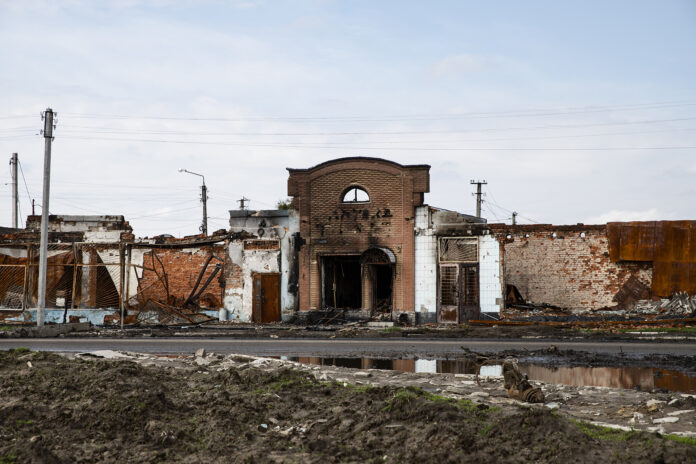In a world characterized by increasing military conflict, global efforts to tackle climate change face unprecedented challenges. While governments and international organizations are desperately trying to limit the rise in temperature and mitigate the effects of climate change, military conflicts could jeopardize progress in this area. This link between conflicts and environmental problems raises a number of issues that need to be addressed urgently.
Effects of war and instability on the environment and climate
Military conflicts are often accompanied by far-reaching environmental destruction. From the contamination of soil and water through the use of chemical weapons to the destruction of oil fields and infrastructure, wars have a direct impact on the environment. For example, the 1991 Gulf War led to massive oil pollution in the Persian Gulf, which had an impact on ecosystems for years afterwards.
In addition, conflicts destabilize entire regions, which can lead to an increase in environmental disasters such as forest fires, water shortages and soil erosion. Tackling these problems requires resources and capacities that are already scarce in conflict-affected areas.
Armaments and environmental pollution
The military-industrial complex is also a major cause of environmental pollution. The production of weapons, vehicles and equipment requires enormous amounts of energy and resources, which often come from unsustainable sources. In addition, the disposal of weapons and ammunition leads to considerable environmental pollution, especially when chemical or nuclear materials are involved.
Displacement and migration as a result of climate change and military conflicts
Military conflicts and climate change can lead to mass displacement and migration, as people are forced to leave their home areas due to war, environmental disasters or a combination of both factors. These population movements not only place a burden on the host countries, but also lead to new tensions and conflicts, which in turn can make the fight against climate change more difficult.
One prominent example is the refugee crisis in the Sahel region, where both the effects of climate change and terrorist activities have led to a massive displacement of people. The destabilized region is not only struggling with the direct effects of climate change, but is also increasingly susceptible to political instability and violence.
Read also: Climate change and migration
Displacement of climate and environmental issues through conflicts
In times of heightened military tensions, governments and the public tend to turn their attention away from environmental issues and focus instead on security concerns. This can lead to urgently needed measures to combat climate change being neglected or postponed.
The need for an integrated approach
In view of these challenges, it is essential that the international community takes an integrated approach to the issues of security, the environment and climate change. This requires increased cooperation between governments, international organizations, civil society and academia to address both the causes of conflict and the consequences of climate change.
What could an integrated approach by the international community look like?
1. coordinated planning and resource allocation: governments should develop coordinated plans that take into account both security aspects and environmental and climate issues. This requires effective cooperation between different ministries and international organizations in order to use resources efficiently and create synergies.
2. early warning systems and preventive measures: The establishment of early warning systems for environmental disasters and conflicts can help to respond to developing crises in good time and take preventative measures. By integrating environmental and safety data, governments and organizations can better assess risks and take appropriate action.
3. capacity building and technological innovation: Strengthening capacities in conflict-affected areas is crucial to address both environmental problems and security risks. This can include providing training, technical assistance and financial resources to help local communities better prepare for and respond to environmental crises.
4. diplomacy and conflict resolution: Promoting diplomacy and conflict resolution at the international level is crucial to finding long-term solutions to conflicts that are often linked to environmental problems. Through dialog and cooperation between different stakeholders, peaceful solutions can be found that protect both security and the environment.
5. sustainable development and climate resilience: Promoting sustainable development and climate resilience is an essential part of an integrated approach to security and environmental issues. This includes measures such as the expansion of renewable energies, the promotion of sustainable agricultural practices and the strengthening of communities’ ability to adapt to the effects of climate change.
6. international cooperation and partnerships: Cooperation between different countries and international organizations is crucial to effectively address global challenges such as climate change and armed conflicts. Through the exchange of best practices, the joint development of policies and the provision of financial support, progress can be made that transcends national borders.
An integrated approach requires a long-term vision and the commitment of all stakeholders to ensure both the safety of people and the protection of the environment.
Conclusion
The link between military conflicts and the fight against climate change is complex and multi-layered. To make progress on both challenges, we urgently need to understand the interactions between safety and the environment and act accordingly. This requires a comprehensive strategy that ensures both the protection of the environment and the safety of people.
Sources:
1 “The Environmental Consequences of War” – United Nations Environment Program (UNEP):[https://www.unep.org/resources/report/environmental-consequences-war]
2. “The Military’s Impact on the Environment” – Center for Climate and Security:[https://climateandsecurity.org/military-impacts-on-the-environment/]
3 “Climate Change and Conflict” – International Committee of the Red Cross (ICRC):[https://www.icrc.org/en/document/climate-change-and-conflict]
Read also: Prosperity and environmental protection: how are they connected?



